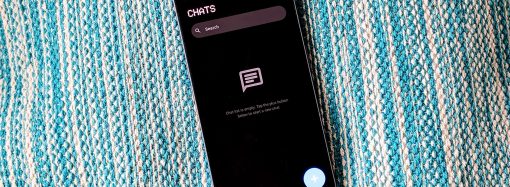Few wardrobe mishaps are as disheartening as pulling a favorite sweater from the laundry only to discover it has shrunk beyond recognition. Whether it’s a cherished cashmere pullover or a finely knit wool crewneck, shrinking can transform a perfectly fitted garment into a misshapen miniature. Fortunately, while the damage may seem irreversible, expert textile care
Few wardrobe mishaps are as disheartening as pulling a favorite sweater from the laundry only to discover it has shrunk beyond recognition. Whether it’s a cherished cashmere pullover or a finely knit wool crewneck, shrinking can transform a perfectly fitted garment into a misshapen miniature. Fortunately, while the damage may seem irreversible, expert textile care specialists can professionally unshrink a sweater and restore it to its original form.
When handled correctly, a sweater that has experienced fiber contraction due to heat or agitation doesn’t have to be a lost cause. Professional garment restoration services offer advanced techniques to recover fit, shape, and even texture—without compromising the integrity of the knit.
Understanding What Happens When a Sweater Shrinks
To grasp how restoration works, it’s essential to understand the science behind shrinkage. Most sweaters are made from natural fibers—such as wool, alpaca, or cashmere—which contain protein-based molecules called keratin. These fibers are elastic and breathable but react dramatically to moisture, heat, and friction.
When exposed to hot water or a tumble dryer, the fibers constrict, causing the garment to contract in all directions. This process, called felting, causes the scales on the fiber strands to interlock tightly, resulting in significant loss of size and pliability.
Because this structural change is physical—not chemical—it can sometimes be reversed, particularly by trained professionals using proper equipment and fiber-specific handling techniques.
Why You Should Avoid DIY and Seek Professional Help
While the internet is flooded with home remedies claiming to fix shrunken sweaters, these approaches often result in further damage. Overstretching a delicate knit or soaking it in unsuitable solutions can ruin the fabric’s tension, distort the shape, or permanently alter its texture.
Professional restoration, by contrast, relies on fiber-safe processes tailored to the garment’s original construction, material blend, and degree of shrinkage. These services prioritize both aesthetic accuracy and textile integrity, offering the best chance for true recovery.
How Experts Professionally Unshrink a Sweater
Restoring a sweater that has been shrunk is a methodical process involving advanced techniques, tools, and a deep understanding of textile behavior. Below are the key stages used by professional textile restoration experts:
1. Material Analysis
The process begins with an assessment of the fabric. Specialists identify the fiber type—such as 100% wool, cashmere blend, or Merino knit—and determine the severity of shrinkage. The type of knit (ribbed, cable, flat, etc.) also influences the choice of restoration strategy.
2. Controlled Relaxation Bath
Using a precisely formulated conditioning bath, professionals relax the tight fiber bonds. Unlike home treatments, these baths are temperature-controlled and pH-balanced to ensure fibers are softened gently, allowing the fabric to regain its flexibility without weakening the structure.
3. Measurement and Blocking
Once the garment is pliable, it is carefully blocked—meaning it’s reshaped to its original dimensions using a flat surface, garment form, or adjustable frame. This stage is highly detailed, involving exact measurement to align shoulders, hemlines, sleeves, and neck openings to the original specifications.
4. Gradual Drying Under Supervision
The reshaped sweater is allowed to air dry under consistent environmental conditions. Airflow, humidity, and drying duration are carefully controlled to maintain the adjusted size and shape. Frequent checks ensure that the garment does not revert or distort as it dries.
5. Final Finishing
The restored sweater is finished with gentle steaming or low-heat pressing to smooth the fibers, restore texture, and ensure softness. Any signs of puckering, warping, or uneven fiber lay are corrected during this final stage.
Types of Sweaters That Can Be Professionally Unshrunk
Not all sweaters respond equally to restoration, but many high-quality garments benefit greatly from expert intervention. These include:
-
Cashmere Sweaters: Known for their softness and fine fibers, cashmere responds well to professional unshrinking when handled delicately.
-
Wool Sweaters: Merino, lambswool, and Shetland wool are all susceptible to shrinkage but typically respond well to expert relaxation and blocking.
-
Blended Knits: Sweaters made from wool-cotton or wool-silk blends can often be restored with customized treatment plans.
-
Vintage Sweaters: Restoring aged or heirloom pieces requires specialist care, but the results are often worth the effort to preserve these unique items.
The Benefits of Choosing a Professional Sweater Restoration Service
Entrusting your sweater to a professional service does more than just fix a size issue. It safeguards the quality and longevity of the garment while restoring its original fit and finish. Key advantages include:
-
Expert Fiber Care: Restoration specialists understand how different fibers react to heat, tension, and moisture.
-
Custom Treatment Plans: Each garment is treated as a unique piece, with no one-size-fits-all approach.
-
Avoidance of Further Damage: Professionals mitigate risks that often occur with home repair attempts.
-
Preservation of Shape and Design: Original features such as ribbing, sleeve tapering, and necklines are retained.
-
Sustainable Wardrobe Practice: Extending the life of garments aligns with environmentally responsible fashion habits.
Maintaining Sweaters After Restoration
Once a sweater has been successfully unshrunk, proper care is essential to prevent recurrence and to extend its lifespan. Most textile care professionals provide aftercare advice to ensure lasting results:
-
Store Flat: Always fold sweaters instead of hanging them to prevent stretching and deformation.
-
Avoid Heat Exposure: Never wash in hot water or place in a tumble dryer. Even minimal heat can trigger shrinkage.
-
Use Mild Detergents: Opt for wool-specific or cashmere-safe cleaners and cold water hand washing when applicable.
-
Air Dry on Flat Surface: After washing, reshape the sweater and dry flat to maintain structure.
Sustainable Fashion Through Garment Restoration
Choosing to professionally unshrink a sweater supports a growing shift toward sustainability in fashion. In a world dominated by disposable clothing and short-lived trends, repairing and restoring garments offers a way to reduce textile waste, lower consumption, and appreciate the craftsmanship that goes into quality knitwear.
By saving a sweater from being discarded, you’re not just preserving a piece of clothing—you’re investing in responsible fashion practices that benefit your wardrobe and the planet alike.
Final Thoughts
A shrunken sweater doesn’t have to be the end of the line for your favorite knit. Through professional textile restoration, it is entirely possible to unshrink a sweater and return it to its original, wearable condition. From careful fiber relaxation to expert blocking and finishing, the journey of restoring a sweater is a testament to the power of craftsmanship, precision, and care.
If you’ve experienced a laundry accident or discovered an old sweater that no longer fits, consider reaching out to a trusted garment restoration expert. With the right hands and the right techniques, your sweater can once again be a perfect fit—just like the day you first wore it.
















